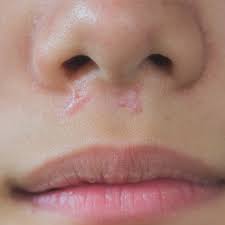A breast MRI and a mammogram serve different purposes and are used in complementary ways for breast cancer detection and diagnosis. Whether a breast MRI is “better” than a mammogram depends on the specific situation, patient risk factors, and the purpose of the imaging. Here’s a comparison of the two to understand their strengths and limitations:
Breast MRI vs. Mammogram
1. Sensitivity (Ability to Detect Cancer)
- Breast MRI:
- More sensitive than mammography for detecting breast cancer, especially in women with dense breast tissue or those at high risk (e.g., BRCA gene mutations).
- Can detect smaller and more hidden tumors that may be missed by mammograms.
- MRI can evaluate the extent of cancer more comprehensively, including detecting multiple tumors (multifocal or multicentric) and determining if the cancer has spread to surrounding tissues.
- Mammogram:
- Effective for detecting microcalcifications, which are small calcium deposits that can sometimes indicate early breast cancer. MRI is less effective in detecting these microcalcifications.
- While less sensitive than MRI, mammography is highly effective for average-risk women and is the standard screening tool for early detection of breast cancer.
2. Use Cases
- Breast MRI:
- Used primarily for high-risk women, such as those with a strong family history of breast cancer or genetic mutations (e.g., BRCA1, BRCA2).
- Employed for problem-solving when other imaging modalities (like mammograms or ultrasounds) provide inconclusive results.
- Recommended for evaluating the extent of cancer in women already diagnosed with breast cancer.
- Also used in younger women with dense breast tissue, where mammograms are less reliable.
- Mammogram:
- The first-line screening tool for breast cancer in women of average risk, particularly those over age 40.
- Mammograms are recommended annually or biennially for women starting around age 40-50, depending on risk factors and guidelines.
- Effective for detecting early-stage cancers and changes in breast tissue over time.
3. Radiation Exposure
- Breast MRI:
- Does not use radiation; instead, it uses magnetic fields and radio waves to create images. This makes it safer for women who need repeated imaging, such as high-risk patients.
- Mammogram:
- Uses low-dose X-rays. While the radiation exposure from a mammogram is small, it is still a factor, especially for women who undergo annual screening.
4. Accuracy in Dense Breast Tissue
- Breast MRI:
- Much better for women with dense breast tissue, as dense tissue can obscure tumors on mammograms.
- Mammogram:
- Less effective in women with dense breasts, where dense tissue appears white on the X-ray, similar to how tumors appear, making it harder to spot abnormalities.
5. Cost and Accessibility
- Breast MRI:
- More expensive than mammography and not as widely available. MRI is also more time-consuming, typically lasting 30-60 minutes.
- Often requires prior approval from insurance companies and is generally reserved for high-risk women or specific diagnostic cases.
- Mammogram:
- Widely accessible and more affordable. It is the standard and routine tool for breast cancer screening, and most insurance plans cover the cost of screening mammograms.
6. False Positives
- Breast MRI:
- Highly sensitive, but this can lead to more false positives—where the MRI picks up areas that look suspicious but turn out to be non-cancerous. This may result in unnecessary biopsies or additional testing, which can cause anxiety.
- Mammogram:
- Less sensitive but more specific, meaning it has a lower risk of false positives compared to MRI.
7. Invasiveness and Comfort
- Breast MRI:
- Non-invasive but may require the use of a contrast agent injected into a vein to improve the clarity of images. Some patients may experience discomfort or anxiety from lying in the enclosed MRI machine.
- Mammogram:
- Involves breast compression, which can be uncomfortable or painful for some women. However, the procedure is quick, typically lasting only a few minutes.
Which is Better for You?
- Breast MRI is better for:
- High-risk individuals (e.g., genetic predispositions, family history).
- Women with dense breast tissue where mammography might be less effective.
- Evaluating the extent of known breast cancer or for monitoring after treatment.
- Women with breast implants, where mammography may not provide clear images.
- Mammogram is better for:
- Routine screening in average-risk women, typically starting at age 40-50.
- Detecting early breast cancers, including microcalcifications.
- Women without risk factors who are looking for a cost-effective, widely available, and fast screening option.
Conclusion:
Both breast MRI and mammography have their strengths, and which one is better depends on the individual’s risk factors and specific clinical needs. For most women, regular mammograms remain the best option for early breast cancer detection. Breast MRI is typically reserved for women at high risk or for specific diagnostic purposes where mammography may not provide enough information. Ideally, the two methods can be used together to offer a more comprehensive picture when needed.



